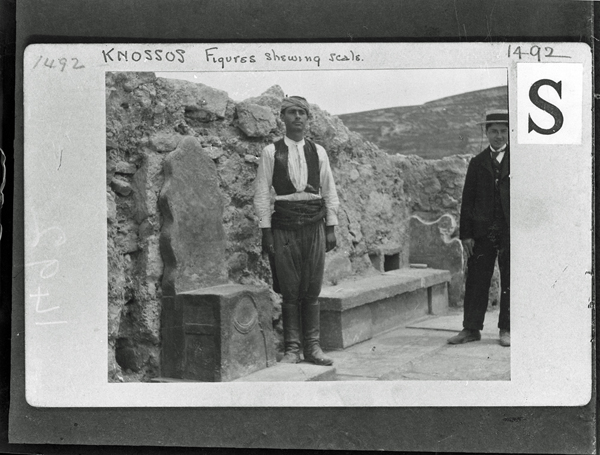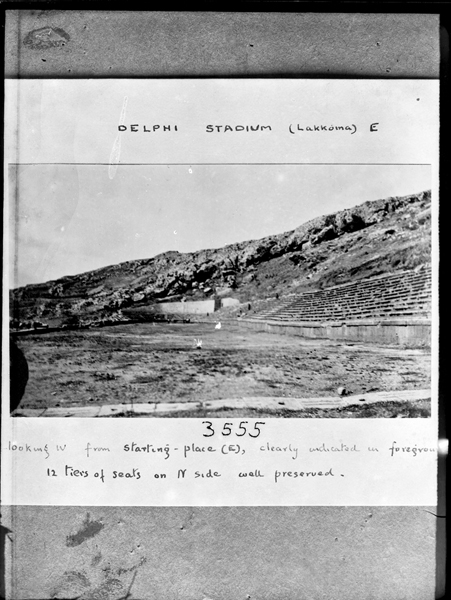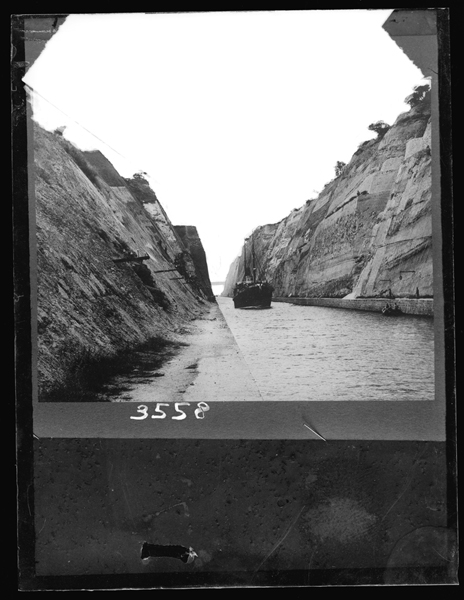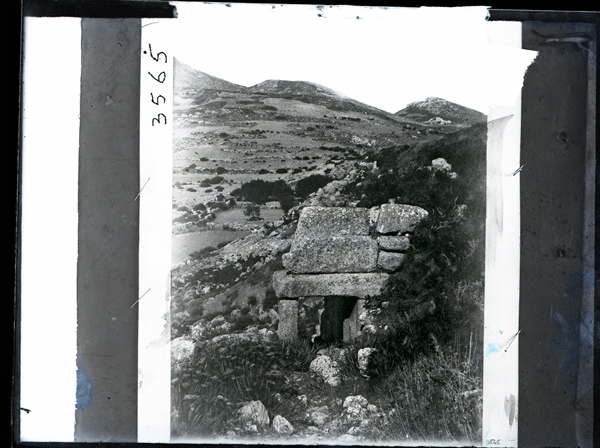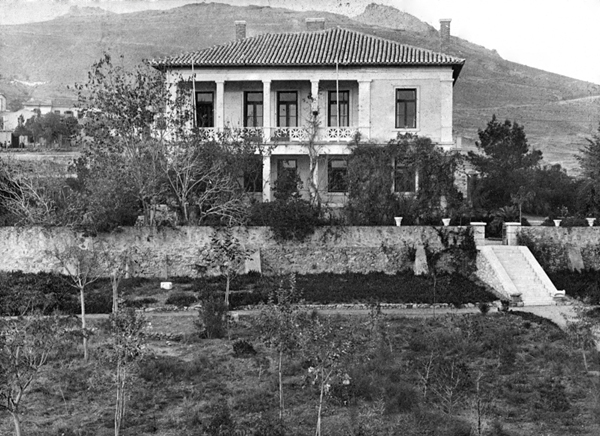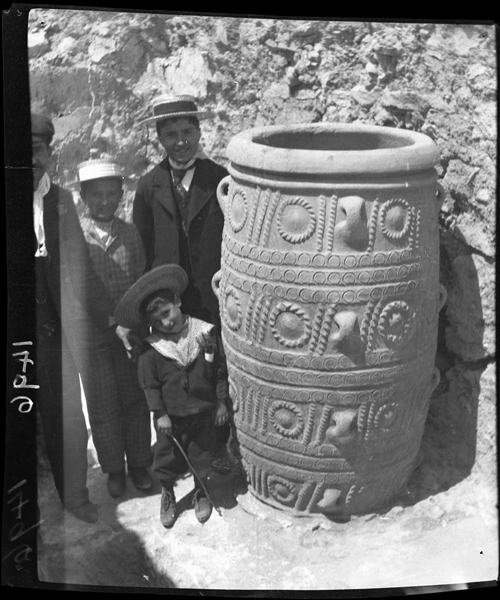Argonauts Abroad: Archive Images from the 1901 Schoolmasters’ cruise
In the spring of 1901, the steam yacht Argonaut embarked on a voyage to places of interest in Greek history. Onboard were 90 (male) schoolmasters, 70 ladies (many of whom were also engaged in education) and 40 others who were interested parties (doctors, barristers, businessmen, etc.), making up a total of 200 people. The expedition was deemed to be of sufficient interest to have a reporter for The Times assigned to go along and cover it. An account of the cruise was duly printed in the newspaper on Friday, Apr 26, 1901.
Organized by the tour club czar, Henry Lunn, this was an experimental cruise for schoolmasters cultivated by a movement in the educational sector that stressed the benefits of travel to enlighten Classics teaching as well as a growing public interest in archaeological work being conducted in the eastern Mediterranean. One of the schoolmasters on board was Frank A. Hardy, a graduate of Keble College (Oxford) and, at the time, a Classics master at Edinburgh Academy.
Numerous images from the “Argonaut Camera Club” – a photographic club named after the yacht – appeared in the Society for the Promotion of Hellenic Studies (SPHS) image collection from 1902 onward. Many of these Argonaut Camera Club members donated images, either depositing original negatives or allowing the SPHS to copy negatives or prints, which became incorporated into the fast-growing collection of negatives, slides and photographic prints that the SPHS was compiling. They were numbered and entered sequentially into negative registers, printed and pasted on catalogue index cards and some chosen to be duplicated in lantern slide format.
Because this was a working collection, continually expanding, with an emphasis on building a reference collection of antiquities, detailed metadata such as specific dates or events surrounding their creation were not always recorded. However, there are clues in the reports of the Photographic Section in the SPHS Proceedings, in periodic lists of Lantern Slide Accessions published in The Journal of Hellenic Studies, external references in other publications as well as a few internal hints in the photographs themselves. Hardy is mentioned in the report for the SPHS photographic section in 1902 as having given the Society permission to reproduce prints from his negatives. Some of these photographs were mounted on card and clearly captioned. Nine glass copy negatives for the Society’s collection produced from these photographs are extant. A few of these nine negatives show signs of painted over areas, particularly the skyline, which was a crude form of retouching to remove spots, fingerprints and dust particles that often appear in the production of copy negatives. Hardy’s images were subsequently listed in the negative register and several of them appear in the 1902 slide accession list.
Hardy’s images also follow the first part of the itinerary of the 1901 Argonaut cruise as published in The Times. Passengers embarked at Marseilles. Their first port of call was the Ionian Island of Ithaca, shown in two of Hardy’s images – one from sea, the other close up. According to The Times, the passengers were given a lecture on the ‘topography of Ithaca in relation to the story of Ulysses [Odysseus]’ on a long hot walk up the hill of Aetos.
The yacht then set sail for Itea, landing for a visit to Delphi. Hardy donated four images taken at Delphi, all focusing on the Stadium.
After Delphi, they proceeded through the Corinth Canal as seen in two of Hardy’s images, one of which is shown below.
From there, heading towards Nauplia, some of the passengers got off at Epidaurus to then walk to Nauplia and the others proceeded directly to the port town. From Nauplia, they visited the prehistoric remains of Tyrins and Mycenae. One image in Hardy’s group of images shows a scene at Mycenae – the backside of the Northern Postern. Although this is a commercial photograph from the English Photographic Company, Hardy nonetheless collected and deposited it with the others from his trip.
After sailing through the Straits of Salamis, the expedition spent two days in Athens during which time, the passengers were entertained by the British School Director, Robert Carr Bosanquet, possibly on the grounds of the School. The image below, taken by Bosanquet in 1902 but not photographed during one of the Argonaut cruises, shows the BSA Director’s house and garden-then in the countryside outside of the centre of the city -at approximately the same time as the first Argonaut cruise.
The Argonauts, upon leaving Athens, set sail for Delos, but due to unfavourable winds, didn’t land there. It sailed through the caldera of Thera at sunset en route to their final destination of Knossos on Crete. Although photographs of Delos, Thera and the site of Knossos do not appear among Hardy’s collection. two images of Knossos in the BSA-SPHS collection can be dated to this 1901 cruise. They were donated by Dr Richard Caton who became a regular participant on future cruises and was mentioned in The Times article as having lectured on Epidaurus onboard the 1901 schoolmaster cruise. Among Caton’s numerous images in the BSA-SPHS collection, two can be securely dated to 1901. The first image is of the Throne Room at Knossos which is obviously taken before the construction of a roof over that area the at the end of Evans’ 1901 excavation season. The glass copy negative of this image is produced from the index card with its pasted photograph. Caton’s second image, showing a pithos at Knossos, is an original film negative and includes the same boy wearing a Harrow hat from the first image therefore dating the second image along with the first.
After Knossos, the Argonauts returned to Marseilles. Hardy, it seems, had been greatly affected by this cruise. At the commencement of the newly formed Classical Association of Scotland in 1902, he highlighted his experience on this maiden voyage. According to the Proceedings of the Association, at its first meeting on 29 November, “Mr F. A. HARDY, Edinburgh Academy, said that, speaking from his own experience, he could say that the best way to quicken one’s interest in the subject was to go and see the places. He had himself been to Athens, and Delphi, and Crete, and he could only say that it had been new life to him.”
The 1901 experimental cruise was dubbed by The Times as ‘The schoolmaster is abroad”. It proved to be such a successful venture that two more cruises were organized in 1903 and 1904. These Argonaut cruises coalesced into the Hellenic Travellers’ Club in 1905 which would continue on an annual basis until halted by the Great War and commencing again in the interwar years. Both Hardy and Caton were listed as founding members of the Club.
Some of the negatives, prints and lantern slides in the original SPHS photographic collection came to the BSA in 2003. The newly formed BSA-SPHS Collection now holds a number of images from these early Argonaut and Hellenic Travellers Club cruises, although none as precisely dated as Hardy’s and the two of Caton’s to the first experimental Argonaut cruise to the Aegean in 1901.
Deborah Harlan
Honorary Research Fellow
Department of Archaeology
Sheffield University
Images from the BSA-SPHS collection are available on the BSA’s Digital Collections page.
Click here for more BSA Archive Stories.
For further reading:
Harlan, D. 2018. ‘More than Armchair Travellers’ ARGO 8: 19-21.
